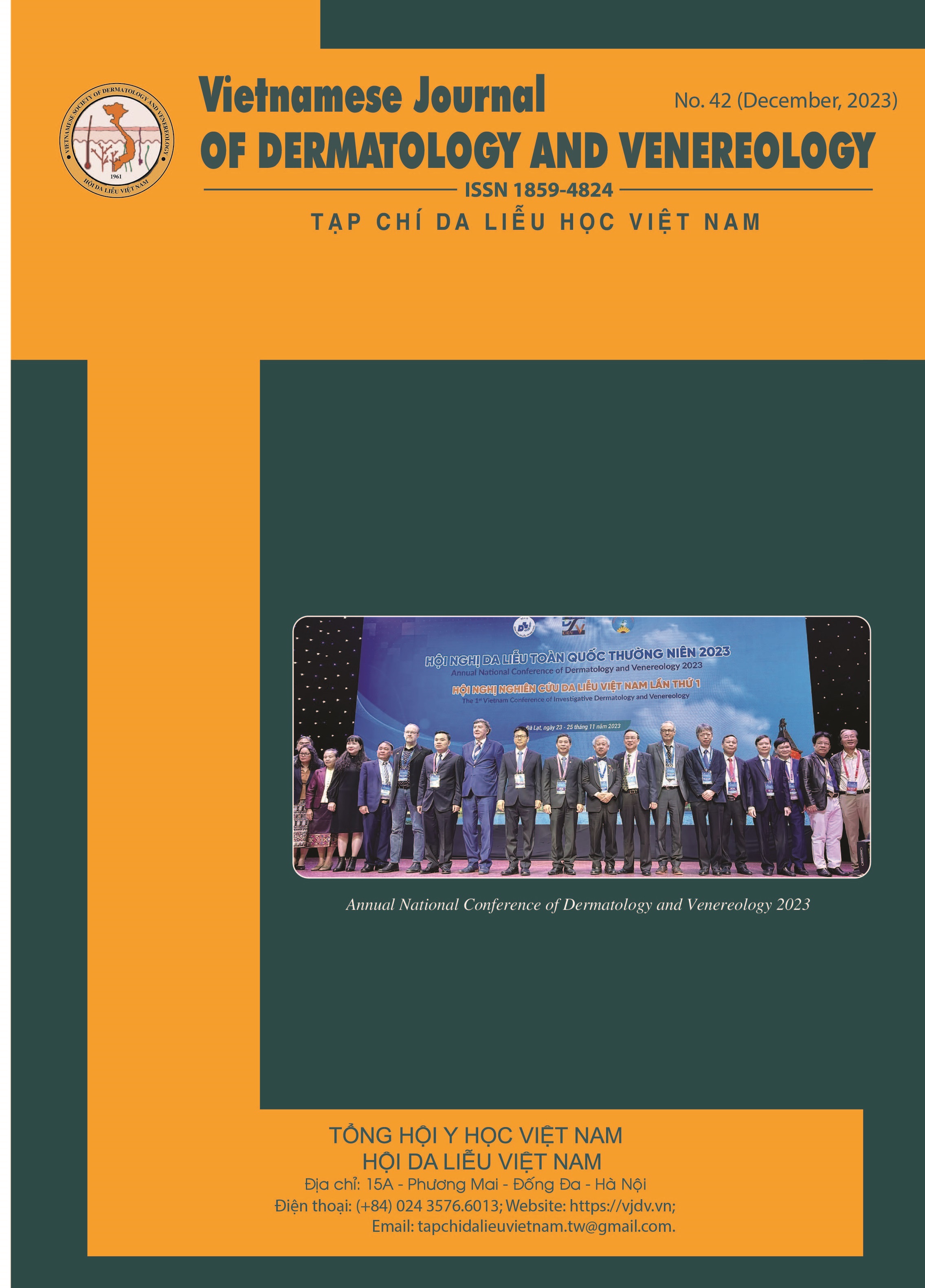CUTANEOUS SQUAMOUS CELL CARCINOMA AT NATIONAL HOSPITAL OF DERMATOLOGY AND VENEREOLOGY: A FOLLOW-UP RETROSPECTIVE STUDY
DOI:
https://doi.org/10.56320/tcdlhvn.42.134Từ khóa:
Cutaneous squamous cell carcinoma (cSCC), high-risk cSCC, sentinel lymph node biopsy, complete lymph node dissectionTóm tắt
Objectives: This study assessed the postoperative follow-up attendance of patients with cutaneous squamous cell carcinoma (cSCC) who underwent management at the National Hospital of Dermatology and Venereology, following the protocol based on the American Academy of Dermatology (AAD) guidelines of care for the management of cutaneous squamous cell carcinoma in 2018 and the classification of low and high-risk cSCC according to the National Comprehensive Cancer Network (NCCN).
Materials and Methods: A retrospective study involving 60 cSCC patients was conducted. The monitoring included recurrent cancerous lesions, new cancerous lesions (cSCC, BCC, melanoma, and other types), detection of metastatic lesions (lymph node and distant metastases), late complication monitoring (bad scarring), and mortality monitoring.
Results: Depending on their stage and risk factors, cSCC patients underwent tumor removal by wide local excision (61.7%) or Mohs surgery (38.3%). Regional lymph node screening for metastasis included clinical examination, ultrasound, cytology, or sentinel lymph node biopsy (SLNB). Distant metastases in cSCC were infrequent, accounting for 1.7%, mainly presenting as lymph node metastases (6.7%). Patients were re-examined at least 5 years after treatment, revealing 4 of 56 patients with lymph node metastasis, 1 with bone metastasis, and 4 in the high-risk group who succumbed in the subsequent period.
Conclusion: The management of cSCC, following the AAD guidelines and risk classification by NCCN, is effective, with treatment modifications as needed and strict monitoring being imperative.
Received 19 June 2023
Revised 18 September 2023
Accepted 25 November 2023





